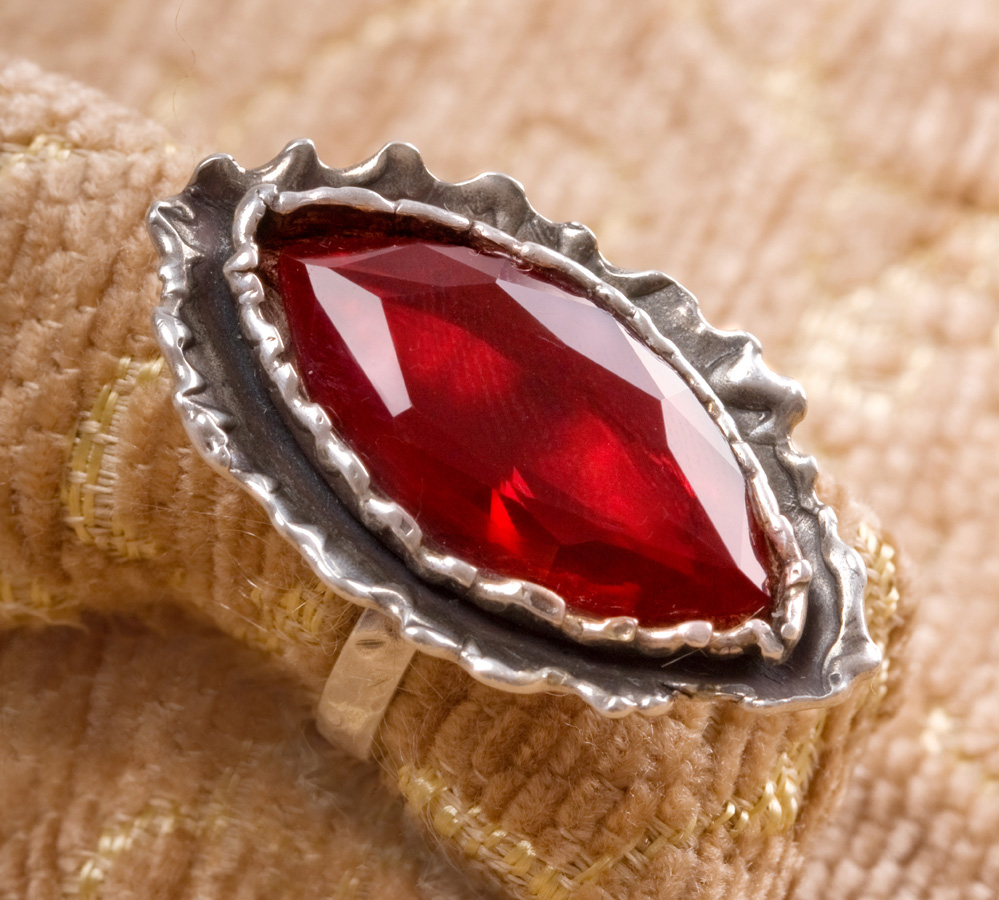Almandine is generally darker red than pyrope and may appear black, although pinkish red specimens are found. It is usually opaque or subtranslucent, but the rare transparent stones have high lustre. Although dense, almandine is brittle and facet edges chip. Many stones show characteristic inclusions and four-rayed stars may be seen when stones are cut in cabochon. Needle-like crystals of rutile or hornblende are typical inclusions in almandine. The darker almandines are frequently cut as cabochons or used as abrasives in garnet paper. The underside of dark almandine is often hollowed out to let more light filter through the stone.
Almandine is found in metamorphic rocks, such as garnet mica schist, and less frequently in granitic pegmatites. It has a worldwide occurrence.
Slices of garnet have been used in windows in churches and temples, and legend has it that Noah suspended garnet in the ark in order to disperse light. Garnet was once said to cure melancholy and to warm the heart.




























Leave a Reply
You must be logged in to post a comment.